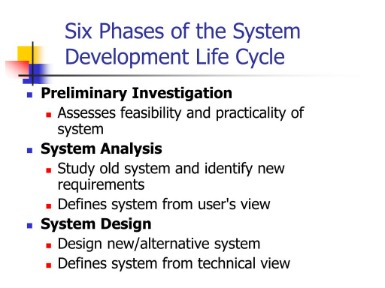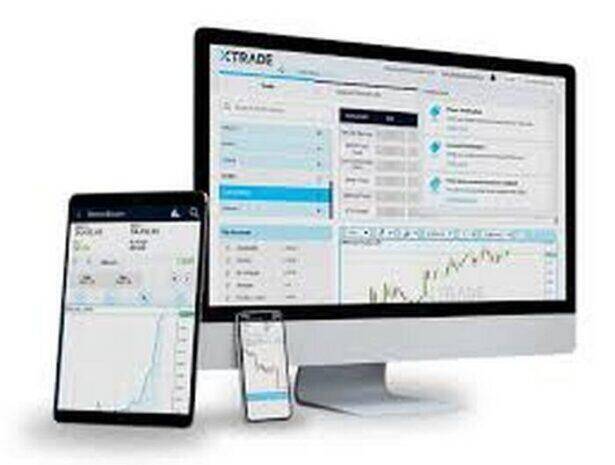c# WPF displaying a “dynamic” table


In the next article, I will show a solution that implements the same application, but with a more strict separation of business logic and GUI controls into their respective layers. Create the binding by setting the grid’s ItemSource property to inherit from the data context. The value converter’s Convert method is called, every time the DataGrid cell is initially modified or lost its focus. In both cases, the user and the role roles are retrieved and the conversion result is returned. The user row is fetched from the DataGridCell’s DataContext, which contains the DataRowView instance that has the user row in its Row property.
The below wpf dynamic table shows how you can use these properties to create a complex table header. Changing the SelectionUnit to Cell only allows for table cells to be selected, not whole rows. DataGrid is a data shaping component that allows the end user to manage the data and also display the data on the screen. It provides a feature called AutoGenerateColumns that automatically generates columns. This article shows you can create or retrieve tables in the code behind. The Datagrid column definition in WPF and its corresponding row definition are represented by two parameters – GridWidth and GridHeight.
- The rows and columns can be added, removed and modified by editing the rows of the A and/or the B table.
- If the data row is the new item row, then it has a NewItemPlaceHolder.
- The DataView allows the modification, insertion and removal of rows and the prevention of these actions.
- In order to merge cells in the table you can use the RowSpan and ColumnSpan properties of the TableCell.
Its https://traderoom.info/s can be stored to an XML file, which is used as a persistence mechanism in this example. In this first part, I focus on the solution of handling dynamic columns. In order to simplify the solution, I broke an architectural constraint, which is that objects of a top layer should not be used in lower layers . In general, the visual appearance of a datagrid should be controlled by application-wide themes, styles, and templates, rather than setting the properties for a single grid. For more information about styling in WPF, you can refer to Learn C# 2010 Part III, which is part of a very thorough course explaining the essentials of C# and WPF.
Grouping Rows
You can also export charts to popular image formats like PNG and JPEG. JSON is one of the most widely used data formats, but working with it can be challenging. In this section, we are going to see two ways data can be retrieved from a JSON string. Changing the SelectionMode to Single only allows the user to select a single item.
Changing the SelectionUnit to CellOrRowHeader allows individual cells to be selected by clicking them, and entire rows to be selected by clicking the row headers. IsReadOnly – when true, prevents the user from double-clicking a cell to edit its contents. CanUserSortColumns – allows the user to sort the data in the table by clicking on column names. CanUserResizeColumns – allows the user to change the width of columns in the table. To find detailed explanations of each feature in the Charts control with code examples, refer to this documentation.
Related articles
This mechanism is used to add, remove and update the dynamic columns when the role table is modified. The WPF datagrid control supports grouping rows by their column values – making complicated tables easier to read – and this can be extended with expand and collapse functionality. This article shows an implementation of dynamic column handling for WPF DataGrid controls. It is a straight forward MVVM implementation where the dynamic column handling is done in the view-model layer. The drawback of this solution is that GUI components spilled over into the ViewModel layer.
- Also, other implementation for cells could be used; for example, 2-dimensional array of cells ICellViewModels[][] works well.
- Every DataSet table has a set of events that can be used to get notified on data modifications..
- In both cases, the user and the role roles are retrieved and the conversion result is returned.
- A converter is used to get this information and it is mapped to the CheckBox’s Visibility flag.
The DataGridCheckBoxColumn style has to be modified, and the Visibility flag of the CheckBox has to be set, depending on the contents of the DataGridCell. If the data row is the new item row, then it has a NewItemPlaceHolder. A converter is used to get this information and it is mapped to the CheckBox’s Visibility flag. The Role and User tables are bound to the data grid controls via a DataView.
Share this post:
The Binding definition in the AddRoleColumn method shown above contains an assignment to the value converter. The relative source of the bound control is set to the DataGridCell, found as an ancestor of the CheckBox control . This article describes a method many-to-many relations can be displayed and modified in a WPF datagrid control.
The DataView allows the modification, insertion and removal of rows and the prevention of these actions. Filtering and sorting can be setup on the DataView as well. The data grid control can handle the data manipulation using the DataView. Rows can be inserted, modified and removed in the data grid control and the data tables are directly updated through the DataView. The data grid control’s column property is declared as read-only, so it cannot be bound to a view model property. The DataGridColumnsBehavior is an attached behavior that overcomes this limitation.
The DataGridCheckBoxColumn binds the check box control to a boolean property of the data in the row that it is displaying. In this case, it would be a boolean property in the user data row, which represents the user to role assignment. Since there is no such property in the UserTable definition, another solution has to be implemented. Instead of binding to the check box control, a value converter is instantiated and bound to the DataGridCell that will contain the CheckBox control.
Working with Tables in Code
To use column-based grouping, you must bind the data grid to a CollectionView, and this is then bound to the data itself. You can define a CollectionViewSource in the window’s resources and choose a column to group the rows. Object tagging is the functionality that allows objects to be tagged to a control. This can be used in situations where the control is available, but an object cannot be accessed using standard application logic. In the case of this sample, the available control is the CheckBox in the DataGridCell and the required object is the role that corresponds to the column.

The role is tagged to the column and can be retrieved at a later time. The ObjectTag itself is a DependencyProperty that can be attached to any type of control that is derived from DependencyObject. The data model of this sample consists of a User and a Role table, and a UserRole table that is the correlation table between the other two tables. An entry in the UserRole table means that the user has a role assigned (referenced by the role’s id).
Deserialize the JSON data to dynamic object
The following code snippet demonstrates how to create a bar chart from the data table. With the JSON data converted into a data table, it is ready to be mapped into the WPF Charts control. You can now easily plot the values of the data table on different types of charts.
After setting , the final source code of the MainWindow.XAML is given below. Similarly set the content of the buttons as insert, delete and reset text box. Connect and share knowledge within a single location that is structured and easy to search.

Then set the content of the labels as Id, Name, Email and City .
Database Save Handling
In Windows Presentation Foundation , the datagrid is a highly-adaptable control for displaying information in tables in your Windows desktop applications. While naturally suited for tabular data, it is flexible enough to present many different kinds of dynamic content. Using it from desktop applications is very similar to how it can be used on the web with Silverlight, or in Windows Phone applications.
Grafana 7 Adds New Visualizations – iProgrammer
Grafana 7 Adds New Visualizations.
Posted: Mon, 08 Jun 2020 07:00:00 GMT [source]
At the contrast of the Grid object witch is defined in the System.Windows.Controls, the table object is defined in the System.Windows.Documents namespace. Moreover, and at the contrast of the grid element, the Table element must be contained in one of those containers. Wpf application is done in MVVM pattern with one main window. Dynamic grid is implemented as user control that contains DataGrid control bound to observable collection of collections of cell view models.
The logic searches for the CheckBox’s DataGridCell and gets the user and role instances that belong to it. It will add or delete the user-role entry depending on the CheckBox.IsChecked state and whether a UserRoleRow is already present. It is a good in-memory database with referential integrity, and it contains built-in notification delegates that publish the insertion, removal and modification of data rows.
Two DataGridTextColumns are instantiated for the first and the last name, and the cell content are bound to the data row through the binding to the row’s respective fields. The post is devoted to the WPF gridview with a dynamically-defined number of rows and columns but all cells have the same width and height. For example, such a grid could be used in chess or checkers games for 8×8 field. As an added bonus I added the functionality that the CheckBox control is not shown in the user data grid new item row.
Financial Modeling Using Excel & VBA – smallbusiness.chron.com
Financial Modeling Using Excel & VBA.
Posted: Thu, 14 Jul 2016 05:40:16 GMT [source]
The rows and columns can be added, removed and modified by editing the rows of the A and/or the B table. The sample code implements a user administration form in which users, roles and the user-role assignment can be administered. Therefore this grid has the dynamic contents, displaying each role as a separate check box column. The user-role assignment is done by checking the respective check box. In this article, I will try to make a representation of the Table object. This one defines a flexible grid area that contains rows and columns.

